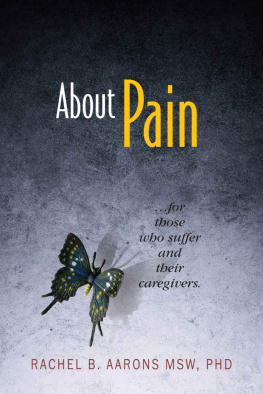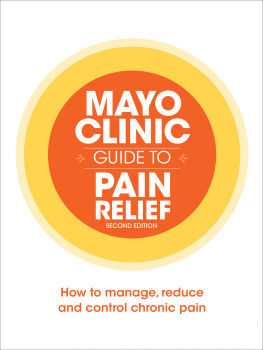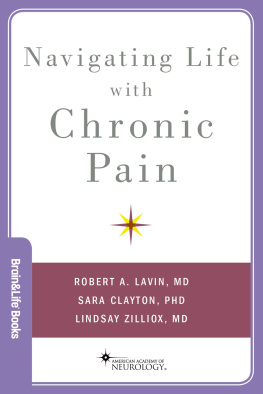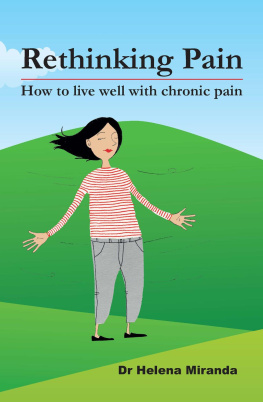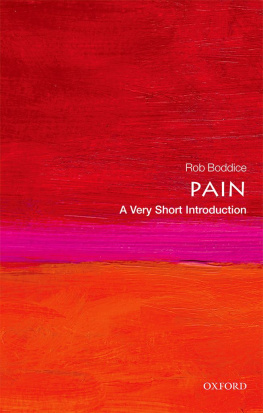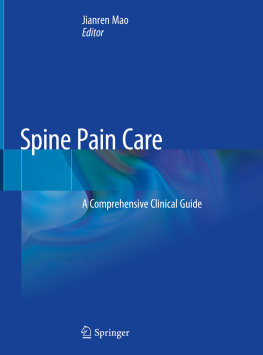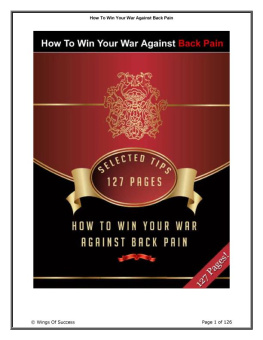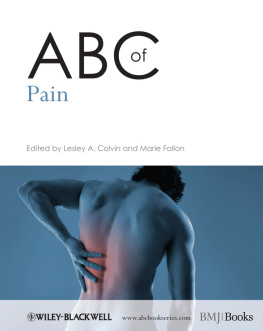About Pain:
For Those Who Suffer and Their Caregivers
Dr. Rachel B. Aarons MSW, Ph.D
Copyright 2015Rachel B. Aarons
All rights reserved
No part of this book may be used or reproduced inany form or by any means, including photocopying, recording, or by aninformation retrieval system without written permission from the author, exceptin the case of brief quotations used in articles or reviews.
Publishedby Journey Press
SantaBarbara, California 93101
Library ofCongress Control Number: 2015904750
CoverPhotos from istockphoto.com
FirstEdition
Dedication
This book is dedicated to
my younger son, fondly dubbed GuruDave,
and
the amazing men and women who sharedtheir stories,
and
the members of my Unitarian SocietyWomens Group
who gave their feedback and supportduring the writing process.
I am deeply grateful to you all.
Contents
Foreword
I. Part One:
A.Reflections on Pain
B. Voices ofPain
II. Part Two:
III. Part Three:
Conclusion
About the Author
Bibliography
Praise for the BookPain is the number one complaint thattakes patients to a physician. Today pain management is under attack by stateand federal regulators making it much more difficult for patients to findadequate pain management. This book is extremely timely. It provides anin-depth understanding of the disruptive force of pain on peoples lives anduseful tools for aiding the emotional fall-out of pain. It puts a human face onthose who suffer with chronic pain and is an eloquent plea for humanity andunderstanding.
David Bearman M.D., Pain Management Specialist
In her book About Pain: For Those Who Suffer and TheirCaregivers , Dr. Rachel B. Aarons explores the emotional side of painfrom a clinical and personal perspective. The emotional and psychologicalexperience of pain is revealed using written patient narratives. This book giveus insight into the profound effect pain can have. It is a window into the darkroom of the experience of pain.
Jeoffrey Benson M.D., Ph.D., BoardCertified Specialist in Pain Management
This book isa unique guide for helping pain patients reduce and transcend their pain.Skillfully filtered through the wisdom of Dr. Aarons' own clinical and personalexperience, About Pain is anempowering antidote for the helplessness that both pain patients and caregiversfeel. Few writers on this complex topic address the hidden gremlins of pain -such elements as self-hatred and guilt - with the personal, courageous andcompassionate perspective of Dr. Rachel Aarons.
Dr. Jeffrey Friedman, Pain Management Psychologist, San LuisObispo, CA.
Animportant book for those who suffer with pain and those who treat them. Thisbook was a very important reminder that we physicians have tools even moreimportant than prescription pad or scalpel: ears to listen to our patients andhearts to respond with care and empathy.
Dr. Eric Trautwein, Internist.
Foreword
A note to the reader
Id like tohave a conversation with you. Im talking to you, the reader. Im going toimagine you listening with rapt attention to what I am about to say.
Thinking ofthis as a conversation rather than a book Im starting is definitely morecomfortable for me. I can sit down and talk to you but I dont know if I canwrite a book at least, not thisbook.
The truth isthat this book is exactly the one I have been assiduously avoiding for a verylong time. It is not a new idea. It has been a constant possibility beckoningto me for several years, but I have been incapable of sitting down and writingit. I think about it and my thoughts dart off in a different direction. Or theycircle repetitively and I end up tired and wanting to go to bed. The notebook Istarted years ago still sits by my bedside literally gathering dust. So, nobook emerges. I have been playing hide-and-seek with this book for a long time.
The subjectis pain. This is a subject wegenerally dont dive into with great relish. Pain is something that we want torun away from. Who wants to hear about it? Who want to write about it? Whowants to be with it?
What we willdiscover is that not wanting to be withpain is one of its prominent features. Both as the person who suffers painand as the one who cares for a person in pain, we are inclined to tiptoe aroundit, to speak of other things, to pretend it doesnt exist. In either thepatient or caregiver role, its hard to be init to fully engage with the experience of pain.
Why a bookat all? If no one wants to hear it and I dont want to write it, this seems anall-too-obvious question. And I have used it quite successfully as myjustification for avoiding this project up till now. I have been telling myselfthat the subject of this book is just intrinsically too painful. How ridiculousthis objection sounds in my head: a bookon pain is painful! But think about it. Its not a place anyone wants tohang out for hours on end in order to write about it. Its likely not a subjectyou want to hear about for hours on end either. Perhaps its not a subject youreally enjoy hearing about at all. Yet, nonetheless, you are reading this book so there must be something that draws you.
Freud saidwe move toward pleasure and away from pain. But pain is an incontrovertibleaspect of our lives. No matter how we try to resist, it is unavoidable. Thereis the physical pain of illness and disability. And there is the emotional painof trauma, depression and anxiety. We may think: Whats the point of focusingon something so unpleasant as pain? The less we say about it the better. As aconsequence, the sufferer becomes trapped in isolation; the caregiver inincomprehension. Our pain is magnified in our effort to avoid it.
Theimplication is that, despite our inclination to be silent on the subject ofpain, someone needs to talk about it in detail, in depth, from allsides. Someone needs to break the taboo and bring it out of the shadows. But, Iasked myself, why should that someone be me?
It is adubious claim to fame that I qualify as a person with extensive experience ofpain. I will tell you about my experience despite my reluctance because I believe you have a right to know why I am presuming to speak on thistopic and why you might benefit by listening to me.
First, Ihave had my share of physical pain and illness. In 1994, I was diagnosed withfibromyalgia. I suffered with unremitting pain in my body for almost twentyyears in my hands and fingers, arms and shoulders, neck, feet and legs.Some pain took residence in specific parts of my body and some pain wasambulatory, meaning that it would move around and suddenly attack and tormenta part that had been relatively quiet before. My body was so highly sensitizedthat any touch beyond the lightest and most gentle was painful to me. Beingjostled in a crowd, an accidental bump or brush, a vigorous handshake, or anenthusiastic hug would cause me to gasp and recoil uncontrollably. I was one ofthe virtual untouchables. As a naturally affectionate and touchy-feelyperson, this was very difficult for me.
In additionto touch, I was sensitive to light, noise, and cold. If we were traveling westjust before sundown with the sun in our eyes, I would be on the verge of ameltdown. I understood all too well why they tortured prisoners with a constantblinding light in their eyes.
Although Ihad moved to California for the warm dry climate, I was cold all the time. Mysix layers of clothing were a joke in my Jazzercise class. At home, I wouldhuddle in front of the gas fireplace in my living room so close to the firethat my knees would burn. But I still shivered with the freezing cold that wascoming from inside.
Loud noisescaused me to start and startle. I stayed away from the noisy party places sopopular in this town. Any event involving crowds of people was a challenge forme. The close proximity of bodies, the volume of noise, and the intensity ofstimulation left me nervous, dizzy and exhausted. Big gala events were rarelyfun for me.
Next page
